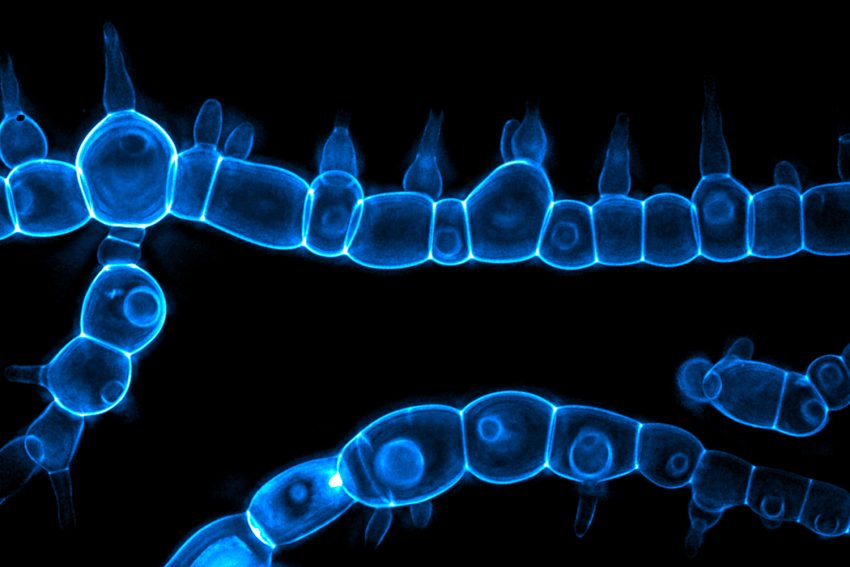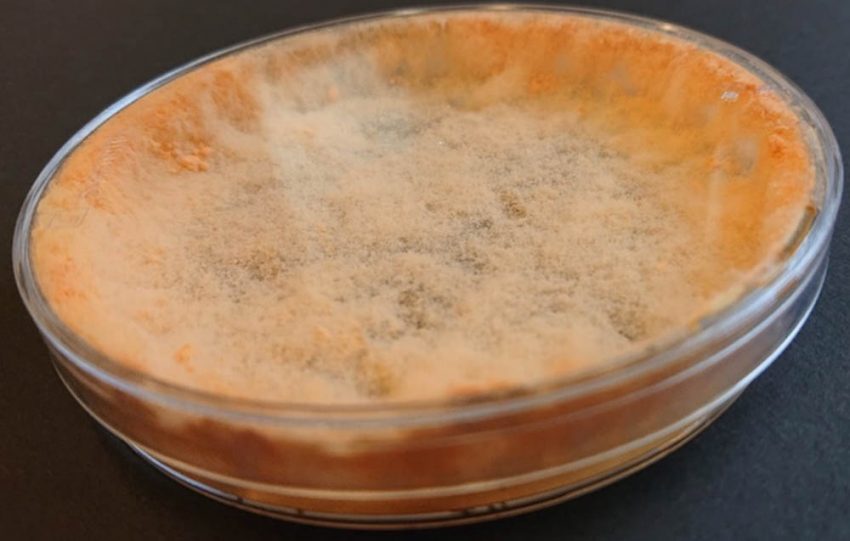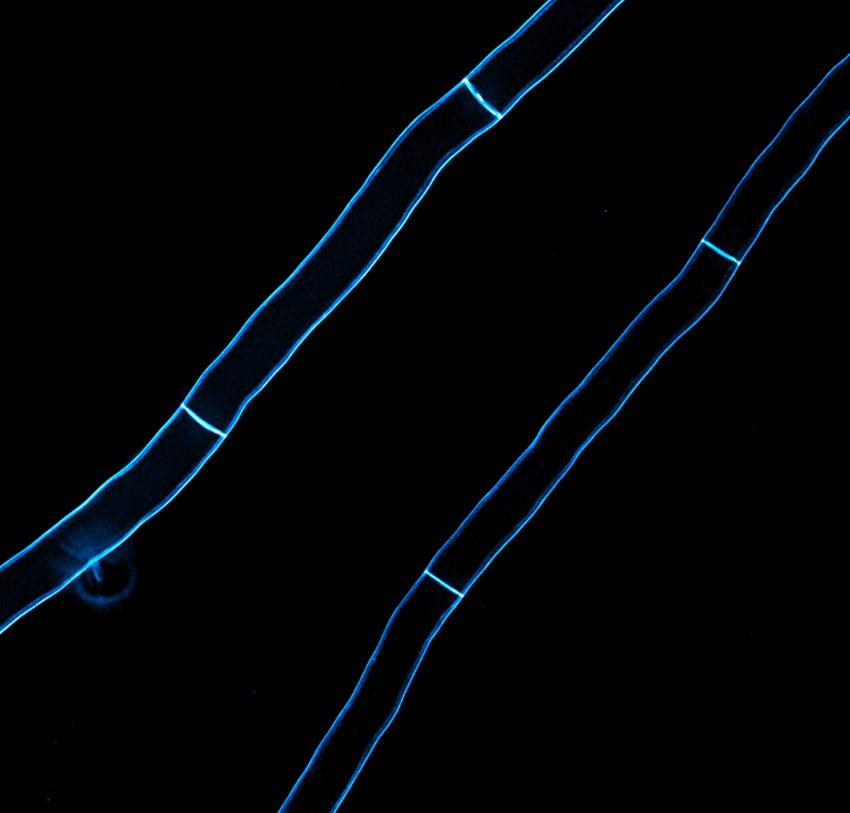Picture of the month: Glowing Moulds From the Institute of Genetics
Mushrooms are real all-rounders. On the one hand, they produce medicinal substances such as penicillin and enrich our food supply. On the other hand, they can also be dangerous for humans. Experts believe that infections with pathogenic fungi such as Candida albicans and Candida auris will increase. In the worst case, such infections can be fatal. In order to better understand fungal pathogens, Lucas Well, a doctoral student at the Institute of Genetics, is researching the harmless mould Neurospora crassa (“Roter Brotschimmelpilz“). Genetically modified strains, such as those shown in our picture of the month, provide a better understanding of fungal cells.

Mutated hyphae of the mould Neurospora crassa (Roter Brotschimmelpilz), which grow strongly branched due to the modification of the gene cot-1. Photo credit: Lucas Well/TU Braunschweig
Actually, cells of Neurospora crassa grow in elongated cell strands, so-called hyphae, polar in one direction. The fact that this is not the case in our picture of the month has to do with the gene cot-1. Lucas Well, a doctoral student at the Institute of Genetics, has severely restricted the activity of the gene and the resulting protein in this mutant of the mould in order to investigate what function it has in the fungal cells. The result is the highly branched structure seen in this month’s picture. Mycologists, i.e. fungal researchers, refer to this as “hyperbranching”. In addition, the fungal cells of the mutant are shortened and the septa, i.e. the cell walls, are significantly thickened compared to the cells of the wild type. To make these changes visible, Lucas Well dyed the hyphe with a dye, made it fluoresce with UV light and finally created images of the fungal mutant with a high-resolution microscope.
“Most famous model organism in the fungal world”
Neurospora crassa is particularly popular among mycologists. It is completely harmless to health and is even used in Indonesia to ferment peanuts and soybeans. “Furthermore, it is undemanding to its environment, grows very quickly and can be easily genetically modified. This makes it the most popular model organism in the fungus world,” explains Well.
By the way, the German name “Roter Brotschimmelpilz” (red bread mould) is misleading. It is not the “Gemeiner Brotschimmel” (common bread mould) that grows on foodstuffs. Presumably, the name “Roter Brotschimmel” goes back to the fact that the fungus tolerates high temperatures and can thus be found on burnt bread. Normally, the fungus is one of the first organisms to colonise forest fire areas before it is then decomposed by bacteria and insects after a short time.

Neurospora crassa in a petri dish. The reddish colouring occurs when the fungus is exposed to light. Photo credit: Lucas Well/TU Braunschweig
Transferability to pathogenic fungal species
The results from the research on the harmless mould Neurospora crassa could later also be transferred to more dangerous fungal species, such as Candida albicans and Candida auris. Both are harmless for people with a healthy immune system, but if the immune system is weakened by illness or artificial immunosuppression after an organ transplant, an infection with either type of fungus can be fatal. Moreover, they are extremely resistant and cannot be treated with conventional agents against fungal infections. Therefore, the better the functioning of fungal cells is researched, the more effectively pathogenic fungal species can be combated.

